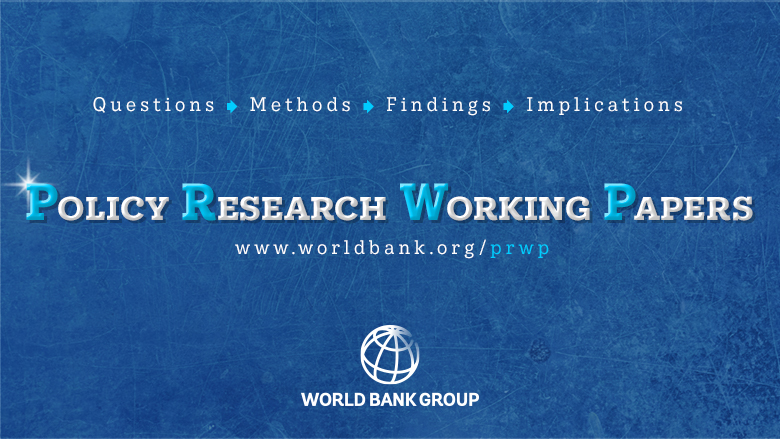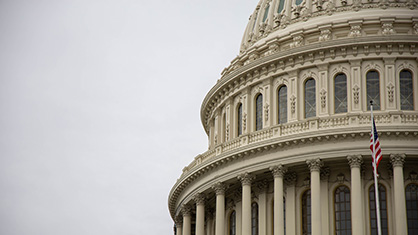- View sidebar

A Political Science Guide
For students, researchers, and others interested in doing the work of political science.

Policy Paper
What is a policy paper.
Policy papers are different from the standard research papers in several respects:
- They are usually addressed at a non-academic audience , such as a particular official, agency, or organization
- They often focus on prescriptive questions. They may begin by diagnosing a particular issue or situation, and typically argue for a solution that will address that issue or situation
- Often, policy papers are focused on being persuasive . The intention is to convince the target audience that your position is the correct one.
- Evidence in support of a position is crucial. This is also important for research papers, but it tends to be absolutely critical in policy papers.
- Policy papers are written efficiently. The audience often does not have much time and does not want to read a book on the subject. Indeed, often policy papers are accompanied by policy briefs which summarize the papers in a page or less.
Policy Paper Components
As with research papers, there is not just one way to write a policy paper.The University of Texas has a nice website with a detailed model, “Suggestions for Writing Policy Analysis” .
The basic elements of a policy paper include:
- It is helpful to careful define the problem and frame it as a specific question to be answered.
- These are the choices for addressing the policy problem.
- This is the step that often is missed in policy analysis. Writers often fail to be explicit and may even assume that everyone shares the same ideas of what the criteria for making a choice should be. This is a mistake. Indeed, it is an important service to the reader (and to the decision-maker) to know the reasons for recommending one policy (or set of policies) over others. There often is major debate about criteria that should be used.
- In his book, A Practical Guide for Policy Analysis , Eurgene Bardach helpfully notes that such criteria are best thought of as applied to “the projected outcomes ” of a policy choice. He makes the useful distinction between evaluative criteria, such as efficiency and fairness, and practical criteria, such as legality and political acceptability.
- Ideally, the policy recommendation should flow from the logical application of your criteria to your policy choices. This is illustrated in the hypothetical example (see table) below.
- In this example, the researcher was able to make clear outcomes about how the policy choices met some criteria (Policy Choice A fails to meet the first criteria of legality). However, it there is some uncertainty about others. For instance, it is unclear how Policy Choice B would affect the criteria of inclusiveness, or how to judge the cost effectiveness of Policy Choice C. In the real world, we may need to incorporate such uncertainty into our policy judgments. But it is important for the policy analyst to be clear to readers and decision-makers where that uncertainty exists.
- Another thing to note is that not all criteria are equal. It may be useful to rank the importance of criteria. Many of us would likely consider legality a necessary criterion. This would allow us to immediately remove Policy Choice A from our list of choices without any further consideration.
Policy Paper Examples
- Peterson Institute for International Economics. “Policy Briefs”
- UC Berkeley Goldman School of Public Policy. “Working Paper Series.”
- Many articles in the journal Foreign Affairs are policy papers.
- Oxfam International. “Policy & Research.”
- Bardach, Eugene and Eric M. Patashnik. 2015. A Practical Guide for Policy Analysis: The Eightfold Path to More Effective Problem Solving. CQ Press.
- Eóin Young and Lisa Quinn. “Writing Effective Policy Papers: A guide for policy advisers in Central and Eastern Europe.” Open Society Institute .
- “The Policy Analysis Process”, Professor Michelle A. Saint-Germain (CSULB)
- Overseas Development Institute. “Writing Policy Papers.”
- UN Food and Agriculture Organization. “Writing Effective Reports, Section 4: Preparing Policy Briefs”
- “How to inform policy makers in a briefing memo or opinion”
- “Tasks for writing briefing memos or opinions”
- Checklists for communicating the policy process
updated July 12, 2017 – MN
Share this:

- Already have a WordPress.com account? Log in now.
- Subscribe Subscribed
- Copy shortlink
- Report this content
- View post in Reader
- Manage subscriptions
- Collapse this bar
- Research & Outlook
World Bank Policy Research Working Papers

The World Bank Policy Research Working Paper Series encourages the exchange of ideas on development and quickly disseminates the findings of research in progress. This series is aimed at showcasing World Bank research—analytic work designed to produce results with wide applicability across countries or sectors. The authors are exclusively World Bank staff and consultants.
Recent Papers by theme
- Infrastructure
Search the Entire Series
You can search the series by author, country, region, title, topic...etc.
Series Hubs

INSIDE THIS SERIES
⇰ Working Papers with Reproducibility Packages
⇰ Working Papers on COVID-19
⇰ Working Papers on Impact Evaluation
⇰ Working Papers funded by KCP
- Development Economics Department
Please log in to save materials. Log in
- Policy Papers
Policy Papers vs Academic Research Articles
Students will learn about the differences between the two and can examine examples that help clarify how information can be packaged differently and how those choices impact how a product will be used.
Academic research vs policy reports and papers
Relationship between policy papers and academic publications.
Comparison chart of characteristics

Structure of a policy paper/report
1. Executive Summary/Purpose Statement (Most staffers will only read this part)
- Background: What is the current policy? Why is it being conducted this way
- Analysis: Why is the policy not working? Why is it necessary to find an alternative? How does it impact them and their constituents?Policy Options: Discuss a few alternatives and their implications. Acknowledge potential downsides and how to limit those risks.
- Recommendation(s): Provide your recommendation and how it can be implemented
3. Conclusion: Summarize analysis and recommendation(s)
4. Appendix: Relevant figures, maps, graphics, etc.
Comparison of a research article and a policy paper based on that research
Society for the Psychological Study of Social Issues. (n.d.). Digital Gaming and Pediatric Obesity: At the Intersection of Science and Social Policy.* How can policy regulate the gaming environment to Promote healthy behaviors and reduce pediatric obesity? Retrieved from https://www.spssi.org/_data/n_0001/resources/live/SIPR%20policy%20summary%20on%20digital%20gaming%20and%20advertizing%20FINAL.pdf
Staiano, A. E., & Calvert, S. L. (2012). Digital gaming and pediatric obesity: At the intersection of science and social policy. Social issues and policy review, 6(1), 54-81. Retrieved from https://www.ncbi.nlm.nih.gov/pmc/articles/PMC3337684/
More examples of policy papers
Hooks Policy Papers on Social Justice Issues
Institute for Policy Research (IPR) Policy Research Briefs
Policy Archive
Version History

The video above is decorative and not illustrative.
Policy Topics

- Education, Training & Labor
- Gender, Race & Identity
Parents play a role in leading boys and girls down different paths of study
HKS Assistant Professor of Public Policy Michela Carlana and Lucia Corno from Cattolica University in Italy studied 2000 middle school students to examine the role of parents in encouraging gender-stereotyped academic paths.

- Social Policy
California’s tough labor laws aren’t protecting the majority of hourly workers

- Public Leadership & Management
Rise to the enormous challenges before you, Ambassador Nicholas Burns urges HKS Class of 2024

- Fairness & Justice
At Harvard Kennedy School, experts debated diversity policies, academic freedom and free speech
How do emotions affect decision making.
We review major theories of emotion and decision making, concentrating on developments within the disciplines of psychology, economics, and decision science.
What is Newsworthy? Theory and Evidence
We study newsworthiness in theory and practice.
Strategy Is Only Partly an Illusion: “Relative Foresight” as an Objective Standard for Evaluating Foreign Policy Competence
Foreign policy-makers must grapple with complexity, uncertainty, and subjectivity.
Review of Shaping and Reshaping the Global Monetary Order during the Interwar Period and Beyond: Local Actors in-between the International Institutions
This publication is a multifaceted analysis of the global monetary regime's evolution, from the disintegrating impacts of the Great Depression during the interwar period to the often inequitable and d
Watch & Listen

- Environment & Energy
The populism of self-destruction: How better policy can blunt the anti-clean energy backlash that threatens humanity’s future
HKS Professor Robert Z. Lawrence and Harvard Professor Dustin Tingley say better economic policies can boost clean energy projects in communities that oppose or are wary of them.

- Human Rights
From the Frontlines: Reflections on Decades of the Racial Justice Movement

What Really Happened at COP 28 in Dubai

Justice for Victims: Lessons from Around the World
Get smart & reliable public policy insights right in your inbox.
- IPR Intranet

INSTITUTE FOR POLICY RESEARCH
- What We Study
Trending Policy Topics

Bipartisanship and Partisanship

Housing Discrimination

School Spending

Food Insecurity

Policing and Violence

COVID-19 and Public Opinion
The Political Economy of Industrial Policy
We examine the ways in which political realities shape industrial policy through the lens of modern political economy. We consider two broad “governance constraints”: i) the political forces that shape how industrial policy is chosen and ii) the ways in which state capacity affects implementation. The framework of modern political economy suggests that government failure is not a necessary feature of industrial policy; rather, it is more likely to emerge when countries pursue industrial policies beyond their governance capacity constraints. As such, our political economy of industrial policy is not fatalist. Instead, it enables policymakers to constructively confront challenges.
We thank Bentley Allan, Heather Boushey, Cristina Caffarra, George Dibb, Claudio Ferraz, Mark Lane, Weijia Li, Jonas Meckling, Jonas Nahm, Dani Rodrik, Todd Tucker, and Eric Verhoogen for helpful comments and conversations. We thank Lottie Field, Mikhael Gaster, Saumya Joshi, Nancy Sun, and Esha Vaze for their excellent research assistance and input. We are indebted to Gian Aswin Chansrichawla for guiding our focus to Thailand as a candidate case study, and for helpful conversations and references about the Thai case. Funding from the Alfred P. Sloan Foundation is gratefully acknowledged. The views expressed herein are those of the authors and do not necessarily reflect the views of the National Bureau of Economic Research.
MARC RIS BibTeΧ
Download Citation Data
More from NBER
In addition to working papers , the NBER disseminates affiliates’ latest findings through a range of free periodicals — the NBER Reporter , the NBER Digest , the Bulletin on Retirement and Disability , the Bulletin on Health , and the Bulletin on Entrepreneurship — as well as online conference reports , video lectures , and interviews .


Student Papers in Public Policy
Home > PPRI > SPPP
Student Papers in Public Policy provides an outlet for multidisciplinary scholarship for undergraduate and graduate students interested in working in the public policy arena. The Purdue Policy Research Institute (formerly the Global Policy Research Institute) is helping to educate students by providing valuable background for those seeking career leadership opportunities in academic, governmental and international corporations where an interest and understanding of global issues is essential. Participants include PPRI Interns, participants in the PPRI Seminar in Global Policy course, and PPRI Graduate Fellows. PPRI Student policy briefs highlight the core ideas, findings, and policy implications of student research. They describe findings of original research or summarize the state of the literature and break down key points on a wide range of topics. These briefs have not undergone traditional peer-review, but have been reviewed by the course instructor and a PPRI staff member.
Recent Content
The Future of Weapons of Mass Destruction Gavin Burn, Josiah Probst, and Quintin LeMire
Lack of Cybersecurity in the United States’ Critical Infrastructure Dean Santos, Jonathan Kovacev, and Kinsey Larson
Lethal Autonomous Weapons and Human-in-the-Chain Ansh Desai, Jacob Harmon, Tanya Khandelwal, and Kyle Vandewalle
Integration of a Smart Grid in the United States Katie Buchholtz, Cooper Fetters, and Cooper LeComp
The Use of Social Media by Terrorists Jan Balk, Benjamin Clarke, and Charles Stembler
Unmanned and Autonomous Weapons Systems: Practices and Related Policy Sabriya Alam, Olivia Jimenez, Julia Taylor, and Dwaine Jengelley
Smart Device Cyber Security Shao-Chieh Lien, Nick Haythorn, and Yu-Chieh Tseng
Military Applications of Nanotechnology Alejandro Molestina, Karthik Raja Ravichandran, and Michael N. Welleck
Data Is Personal: We Should Treat It As Such Kaleb Dunn
Implement Multi-Factor Authentication on All Federal Systems Now Megan Walsh
Removing Racially Biased Algorithms in Policing Andie Lee
The Case for Online Ranked-Choice Voting Rayyan Khan
Agriculture in a Water Scarce World Allison Roberts, Amjad Assi, Bassel Daher, and Men Li
Ocean Sustainability Logan Levan, Joshua Millea, Woo Choi, Mark Powell, and David Flint
The Obesity Epidemic Lenka Kollar, Evienne Epifano, Molly McKneight, Jeff Miskovich, and Heather Moore
Policy on Immigration from the Southwest and Resulting Border Control Security Implications Amber Gottfried, Arpit Bawa, Russel Goff, Austin Grelle, and Marielynn Herrera
Women and Economic Development in the Middle East and North Africa Lindsay Markle
Energy Independence in the USA Janice Ringler
Animal Housing Legislation Kelli Kirtley
View More »
- Journal Home
- Submit Article
- Most Popular Papers
- Receive Email Notices or RSS
Advanced Search
Home | About | FAQ | My Account | Accessibility Statement
Privacy Copyright

Policy Briefs
What this handout is about.
This handout will offer tips for writing effective policy briefs. Be sure to check with your instructor about their specific expectations for your assignment.
What are policy briefs?
Imagine that you’re an elected official serving on a committee that sets the standards cars must meet to pass a state inspection. You know that this is a complex issue, and you’d like to learn more about existing policies, the effects of emissions on the environment and on public health, the economic consequences of different possible approaches, and more–you want to make an informed decision. But you don’t have time to research all of these issues! You need a policy brief.
A policy brief presents a concise summary of information that can help readers understand, and likely make decisions about, government policies. Policy briefs may give objective summaries of relevant research, suggest possible policy options, or go even further and argue for particular courses of action.
How do policy briefs differ from other kinds of writing assignments?
You may encounter policy brief assignments in many different academic disciplines, from public health and environmental science to education and social work. If you’re reading this handout because you’re having your first encounter with such an assignment, don’t worry–many of your existing skills and strategies, like using evidence , being concise , and organizing your information effectively , will help you succeed at this form of writing. However, policy briefs are distinctive in several ways.
In some of your college writing, you’ve addressed your peers, your professors, or other members of your academic field. Policy briefs are usually created for a more general reader or policy maker who has a stake in the issue that you’re discussing.
Tone and terminology
Many academic disciplines discourage using unnecessary jargon, but clear language is especially important in policy briefs. If you find yourself using jargon, try to replace it with more direct language that a non-specialist reader would be more likely to understand. When specialized terminology is necessary, explain it quickly and clearly to ensure that your reader doesn’t get confused.
Policy briefs are distinctive in their focus on communicating the practical implications of research to a specific audience. Suppose that you and your roommate both write research-based papers about global warming. Your roommate is writing a research paper for an environmental science course, and you are writing a policy brief for a course on public policy. You might both use the exact same sources in writing your papers. So, how might those papers differ?
Your roommate’s research paper is likely to present the findings of previous studies and synthesize them in order to present an argument about what we know. It might also discuss the methods and processes used in the research.
Your policy brief might synthesize the same scientific findings, but it will deploy them for a very specific purpose: to help readers decide what they should do. It will relate the findings to current policy debates, with an emphasis on applying the research outcomes rather than assessing the research procedures. A research paper might also suggest practical actions, but a policy brief is likely to emphasize them more strongly and develop them more fully.
To support these changes in audience, tone, and purpose, policy briefs have a distinctive format. You should consult your assignment prompt and/or your professor for instructions about the specific requirements of your assignment, but most policy briefs have several features in common. They tend to use lots of headings and have relatively short sections. This structure differs from many short papers in the humanities that may have a title but no further headings, and from reports in the sciences that may follow the “IMRAD” structure of introduction, methods, results, and discussion. Your brief might include graphs, charts, or other visual aids that make it easier to digest the most important information within sections. Policy briefs often include some of these sections:
- Title: A good title quickly communicates the contents of the brief in a memorable way.
- Executive Summary: This section is often one to two paragraphs long; it includes an overview of the problem and the proposed policy action.
- Context or Scope of Problem: This section communicates the importance of the problem and aims to convince the reader of the necessity of policy action.
- Policy Alternatives: This section discusses the current policy approach and explains proposed options. It should be fair and accurate while convincing the reader why the policy action proposed in the brief is the most desirable.
- Policy Recommendations: This section contains the most detailed explanation of the concrete steps to be taken to address the policy issue.
- Appendices: If some readers might need further support in order to accept your argument but doing so in the brief itself might derail the conversation for other readers, you might include the extra information in an appendix.
- Consulted or Recommended Sources: These should be reliable sources that you have used throughout your brief to guide your policy discussion and recommendations.
Depending on your specific topic and assignment, you might combine sections or break them down into several more specific ones.
How do I identify a problem for my policy brief?
An effective policy brief must propose a solution to a well-defined problem that can be addressed at the level of policy. This may sound easy, but it can take a lot of work to think of a problem in a way that is open to policy action.
For example, “bad spending habits in young adults” might be a problem that you feel strongly about, but you can’t simply implement a policy to “make better financial decisions.” In order to make it the subject of a policy brief, you’ll need to look for research on the topic and narrow it down. Is the problem a lack of financial education, predatory lending practices, dishonest advertising, or something else? Narrowing to one of these (and perhaps further) would allow you to write a brief that can propose concrete policy action.
For another example, let’s say that you wanted to address children’s health. This is a big issue, and too broad to serve as the focus of a policy brief, but it could serve as a starting point for research. As you begin to research studies on children’s health, you might decide to zoom in on the more specific issue of childhood obesity. You’ll need to consult the research further to decide what factors contribute to it in order to propose policy changes. Is it lack of exercise, nutritional deficiencies, a combination of these, or something else? Choosing one or another of these issues, your brief would zoom in even further to specific proposals that might include exercise initiatives, nutritional guidelines, or school lunch programs.
The key is that you define the problem and its contributing factors as specifically as possible so that some sort of concrete policy action (at the local, state, or national level) is feasible.
Framing the issue
Once you’ve identified the problem for yourself, you need to decide how you will present it to your reader. Your own process of identifying the problem likely had some stops, starts, and dead-ends, but your goal in framing the issue for your reader is to provide the most direct path to understanding the problem and the proposed policy change. It can be helpful to think of some of the most pressing questions your audience will have and attempt to preemptively answer those questions. Here are some questions you might want to consider:
What is the problem?
Understanding what the problem is, in the clearest terms possible, will give your reader a reference point. Later, when you’re discussing complex information, your reader can refer back to the initial problem. This will help to ‘anchor’ them throughout the course of your argument. Every piece of information in the brief should be clearly and easily connected to the problem.
What is the scope of the problem?
Knowing the extent of the problem helps to frame the policy issue for your reader. Is the problem statewide, national, or international? How many people does this issue affect? Daily? Annually? This is a great place for any statistical information you may have gathered through your research.
Who are the stakeholders?
Who does this issue affect? Adult women? College-educated men? Children from bilingual homes? The primary group being affected is important, and knowing who this group is allows the reader to assign a face to the policy issue.
Policy issues can include a complex network of stakeholders. Double check whether you have inadvertently excluded any of them from your analysis. For example, a policy about children’s nutrition obviously involves the children, but it might also include food producers, distributors, parents, and nutritionists (and other experts). Some stakeholders might be reluctant to accept your policy change or even acknowledge the existence of the problem, which is why your brief must be convincing in its use of evidence and clear in its communication.
Effective policy-writing
This handout has emphasized that good policy briefs are clear, concise, and focused on applying credible research to policy problems. Let’s take a look at two versions of the introduction to a policy brief to see how someone might write and revise to achieve these qualities:
A “not-so-good” policy brief
Adolescents’ Dermatologic Health in Outlandia: A Call to Action
The Report on Adolescents’ Dermatologic Health in Outlandia (2010), issued by Secretary of Health Dr. Polly Galver, served as a platform to increase public awareness on the importance of dermatologic health for adolescents. Among the major themes of the report are that dermatologic health is essential to general health and well-being and that profound and consequential dermatologic health disparities exist in the state of Outlandia. Dr. Galver stated that what amounts to a silent epidemic of acne is affecting some population groups–restricting activities as schools, work, and home–and often significantly diminishing the quality of life. Dr. Galver issued the Report on Adolescents’ Dermatologic Health as a wake-up call to policymakers and health professionals on issues regarding the state’s dermatologic health. (“ Not so good policy brief ,” Reproduced with permission of the Johns Hopkins Bloomberg School of Public Health, Baltimore, MD.)
This paragraph introduces a relevant and credible source, but it fails to use that source to explain a problem and propose policy action. The reader is likely to be confused because the word “acne” does not appear until the middle of the paragraph, and the brief never states what action should be taken to address it. In addition to this lack of focus, the paragraph also includes unnecessary phrases like “among the major themes” that could be removed to make it more concise.
A better policy brief
Seeing Spots: Addressing the Silent Epidemic of Acne in Outlandia’s Youth
Acne is the most common chronic disease among adolescents in Outlandia (Outlandia Department of Health, 2010). Long considered a benign rite of passage, acne actually has far-reaching effects on the health and well being of adolescents, significantly affecting success in school, social relationships, and general quality of life. Yet large portions of the state’s population are unable to access treatment for acne. The Secretary of Health’s Report on Adolescents’ Dermatologic Health in Outlandia (2010) is a call to action for policymakers and health professionals to improve the health and wellbeing of Outlandia’s youth by increasing access to dermatologic care (“ A Better Policy Brief” , Reproduced with permission of the Johns Hopkins Bloomberg School of Public Health, Baltimore, MD.)
This paragraph is far more focused and concise than the first version. The opening sentence is straightforward; instead of focusing on the source, it makes a clear and memorable point that is supported by the source. Additionally, though the first version was titled “a call to action,” it did not actually say what that action might be. In this version, it is clear that the call is for increased access to dermatologic care.
Keep in mind that clarity, conciseness, and consistent focus are rarely easy to achieve in a first draft. Careful editing and revision are key parts of writing policy briefs.
Works consulted
We consulted these works while writing this handout. This is not a comprehensive list of resources on the handout’s topic, and we encourage you to do your own research to find additional publications. Please do not use this list as a model for the format of your own reference list, as it may not match the citation style you are using. For guidance on formatting citations, please see the UNC Libraries citation tutorial . We revise these tips periodically and welcome feedback.
Smith, Catherine F. 2016. Writing Public Policy , 4th ed. New York: Oxford University Press.
Young, Eoin, and Lisa Quinn. n.d. “The Policy Brief.” University of Delaware. Accessed June 24, 2019. https://cpb-us-e1.wpmucdn.com/blog.lrei.org/dist/c/104/files/2009/11/PolicyBrief-described.pdf .
You may reproduce it for non-commercial use if you use the entire handout and attribute the source: The Writing Center, University of North Carolina at Chapel Hill
Make a Gift
Ask Yale Library
My Library Accounts
Find, Request, and Use
Help and Research Support
Visit and Study
Explore Collections
Public Policy Subject Guide: Policy Sources
- Public Policy
- Policy Sources
- Govts, Think Tanks, NGOs & IGOs
- Public Opinion This link opens in a new window
- Books, Dissertations, Articles & Databases
- Organize Your Research
Find policy papers
PolicyArchive, CIAO, and PAIS are good starting points in the search for policy papers. Check out the other sources below, or the tabs for Think Tanks and NGOs/IGOs, for additional resources.
- PolicyArchive (Center for Governmental Studies) PolicyArchive is a digital archive of public policy research that includes summaries and full texts, videos, reports, briefs, and multimedia material from think tank, university, government, and foundation-funded policy research. Search by topic, author, funding agency, and more.
- Institute for Social and Policy Studies (Yale University) "The Institution for Social and Policy Studies advances interdisciplinary research in the social sciences that aims to shape public policy and inform democratic deliberation." ( About ISPS )
- Annenberg Public Policy Center "The Annenberg Public Policy Center of the University of Pennsylvania has been the premier communication policy center in the country since its founding in 1993. By conducting and releasing research, staging conferences and hosting policy discussions, its scholars have addressed the role of communication in politics, adolescent behavior, child development, health care, civics and mental health, among other important arenas. The Center’s researchers have drafted materials that helped policy-makers, journalists, scholars, constituent groups and the general public better understand the role that media play in their lives and the life of the nation." ( About the Center )
- Center for Strategic and International Studies CSIS is a bipartisan, non-profit organization focused on "defense and security; regional stability; and transnational challenges ranging from energy and climate to global development and economic integration."
- RAND Corporation Select the "Research" tab to find research briefs and other policy-oriented publications.
- IssueLab (The Foundation Center) "Access to thousands of case studies, evaluations, white papers, and issue briefs addressing some of the world's most pressing social problems."
- Google Tech Policy Center The Google Tech Policy blog contains relevant policy related materials based on technology
Strategies for effective Googling
Many fantastic public policy resources--in particular, policy briefs from think tanks, NGOs, and research institutes--can be found online. Here are a few tips for more efficient, effective Google searches:
Include the phrase "policy brief" in your search. (Keep the quotation marks around "policy brief" to find this exact phrase.)
Use a site: search. This will limit your search to a broad domain (e.g., .org sites, .edu sites, .gov sites) or to a specific website (e.g., http://www.urban.org).
If you're not sure which think tank, NGO, or agency might have issued policy papers on your topic, try a search engine that's powered by Google but limited to a select group of sites.
- Think Tank Search (Harvard Kennedy School): A directory of U.S. and international think tanks, as well as a custom Google search of more than 250 think tank websites.
- Intergovernmental Organization Search Engine : Searches across hundreds of IGO websites.
- Non-governmental Organization Search Engine : Searches across over a thousand NGO websites.
- << Previous: Public Policy
- Next: Govts, Think Tanks, NGOs & IGOs >>
- Last Updated: Dec 7, 2023 1:22 PM
- URL: https://guides.library.yale.edu/publicpolicy
Site Navigation
P.O. BOX 208240 New Haven, CT 06250-8240 (203) 432-1775
Yale's Libraries
Bass Library
Beinecke Rare Book and Manuscript Library
Classics Library
Cushing/Whitney Medical Library
Divinity Library
East Asia Library
Gilmore Music Library
Haas Family Arts Library
Lewis Walpole Library
Lillian Goldman Law Library
Marx Science and Social Science Library
Sterling Memorial Library
Yale Center for British Art
SUBSCRIBE TO OUR NEWSLETTER
@YALELIBRARY

Yale Library Instagram
Accessibility Diversity, Equity, and Inclusion Giving Privacy and Data Use Contact Our Web Team
© 2022 Yale University Library • All Rights Reserved

COMMENTS
GUIDELINES FOR SUCCESSFUL POLICY ANALYSES. • Start with an overview of recommendations, methodology, and a roadmap, not with background material. • Create chapter breakdowns according to findings and recommendations, not according to the steps in your research journey.
Research Policy (RP) is a multi-disciplinary journal devoted to analyzing, understanding and effectively responding to the economic, policy, management, organizational, environmental and other challenges posed by innovation, technology, R&D and science.
What is a policy paper? Policy papers are different from the standard research papers in several respects: They are usually addressed at a non-academic audience, such as a particular official, agency, or organization; They often focus on prescriptive questions.
The World Bank Policy Research Working Paper Series encourages the exchange of ideas on development and quickly disseminates the findings of research in progress. This series is aimed at showcasing World Bank research—analytic work designed to produce results with wide applicability across countries or sectors.
The Review of Policy Research ( RPR) invites original articles that apply and/or develop theoretical approaches to public policy.
Policy papers are different from the standard research papers in several respects: They are usually addressed at a non-academic audience, such as a particular official, agency, or...
*** POLICY PAPERS ARE CRITICAL ANALYSES OF AN IMPORTANT SOCIAL ISSUE OR PROBLEM THAT INVOLVES THE RESEARCH AND DEVELOP OF A DEFENSIBLE PLAN (POLICY PROPOSAL) FOR SOLVING THE PROBLEM AND FORMULATE WORKABLE STRATEGIES FOR IMPLEMENTING THE PLAN. THREE KEY FOCI: [1] AIMS TO IDENTIFY KEY POLICY ISSUES;
In this paper, we outline these issues and present a conceptual framework for better understanding, measuring, and encouraging public policy research impact in academic settings. 2 THE PURPOSE OF PUBLIC POLICY RESEARCH AND THE ACADEMIC CONTEXT. The production, use, and evaluation of policy knowledge is far from straightforward.
This paper analyzes a sample of ten articles from the environmental economics literature that are particularly good in drawing policy recommendations or policy implications from empirical data. Each article is summarized in terms of structure and content, and the things that make it particularly effective are discussed.
Policy Papers vs Academic Research Articles | OER Commons. Overview. Students will learn about the differences between the two and can examine examples that help clarify how information can be packaged differently and how those choices impact how a product will be used. Academic research vs policy reports and papers.
May 14, 2024. View all Featured. Research. Strategy Is Only Partly an Illusion: “Relative Foresight” as an Objective Standard for Evaluating Foreign Policy Competence. By Richard Zeckhauser. May 2024. Foreign policy-makers must grapple with complexity, uncertainty, and subjectivity.
What We Study. Trending Policy Topics. IPR Trending Policy Topics offer key evidence-based insights into timely policy issues. Browse our faculty's research roundups. Bipartisanship and Partisanship. Housing Discrimination. School Spending. Food Insecurity. Policing and Violence. COVID-19 and Public Opinion.
Working Paper 32507. DOI 10.3386/w32507. Issue Date May 2024. We examine the ways in which political realities shape industrial policy through the lens of modern political economy. We consider two broad “governance constraints”: i) the political forces that shape how industrial policy is chosen and ii) the ways in which state capacity ...
LGI commissions more policy papers, provides grants for members of our professional networks to implement comparative and applied policy research, and we cooperate with international organizations in policy formulation and training. In Central and Eastern Europe we are faced with special problems: English is the second language of our
Student Papers in Public Policy | Purdue Policy Research Institute | Purdue University. Home > PPRI > SPPP. Student Papers in Public Policy provides an outlet for multidisciplinary scholarship for undergraduate and graduate students interested in working in the public policy arena.
A policy brief presents a concise summary of information that can help readers understand, and likely make decisions about, government policies. Policy briefs may give objective summaries of relevant research, suggest possible policy options, or go even further and argue for particular courses of action.
833–843. Published: 02 September 2009. Split View. Annotate. Cite. Permissions. Share. Abstract. This article provides a unique methodology of policy research, focusing on the various factors that differentiate policy research from basic research.
Find policy papers. PolicyArchive, CIAO, and PAIS are good starting points in the search for policy papers. Check out the other sources below, or the tabs for Think Tanks and NGOs/IGOs, for additional resources. PolicyArchive (Center for Governmental Studies)